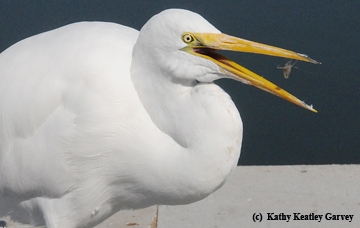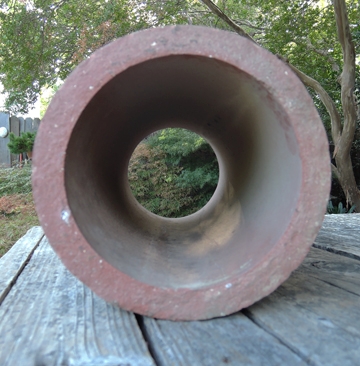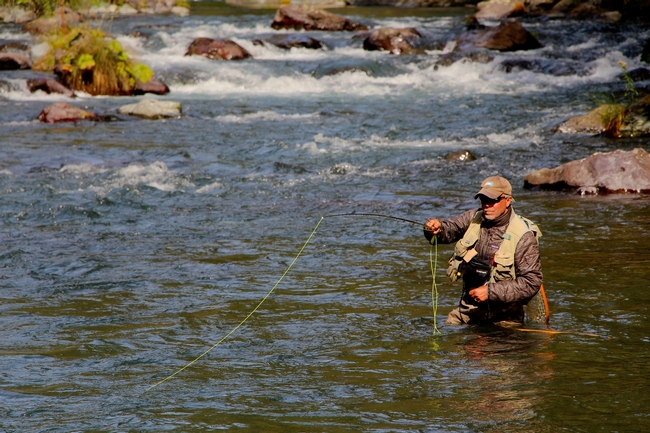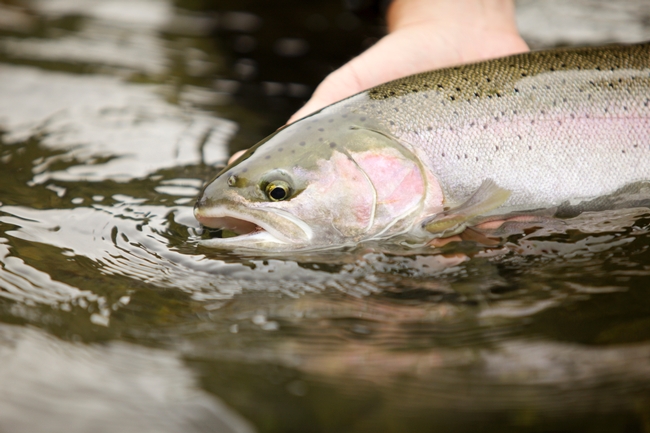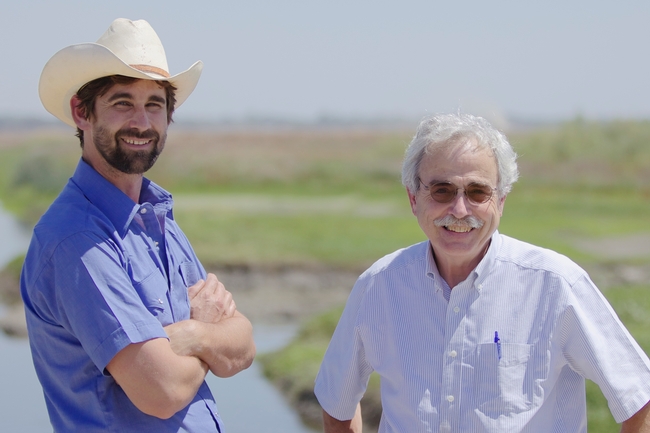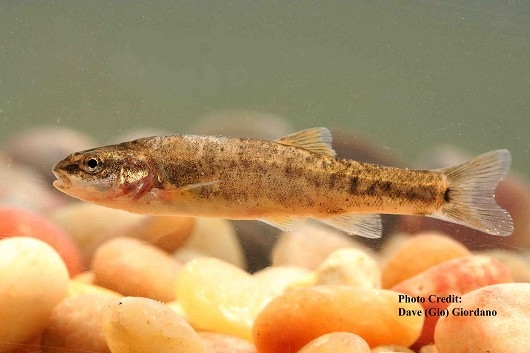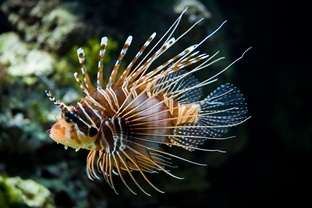Posts Tagged: fish
Insight into the environmental impacts of cannabis agriculture
A recent study led by UC Cooperative Extension specialist Van Butsic used high resolution satellite imagery to conduct a systematic survey of cannabis production and to explore its potential ecological consequences.
Published this spring in Environmental Research Letters, the study focused on the “emerald-triangle” in northern California's Humboldt, Mendocino, and Trinity counties, which many believe is the top cannabis-producing region in the United States.
The UC Berkeley-based Butsic and his co-author Jacob Brenner used Google Earth imagery to locate and map grow sites (both greenhouses and outdoor plots) in 60 watersheds. Most cannabis grow sites are very small, and have gone undetected when researchers used automated remote sensing techniques, which are commonly used to detect larger changes such as deforestation.
“We chose to use fine-grained imagery available in Google Earth and to systematically digitize grows by hand, identifying individual plants. Most plants stand out as neat, clear, little circles,” said Brenner, who is on the faculty of the Department of Environmental Studies and Science at Ithaca College. “The method was laborious — it took over 700 hours — but it proved to be highly accurate.”
Butsic and Brenner paired their image analysis with data on the spatial characteristics of the sites (slope, distance to rivers, distance to roads) and information on steelhead trout and Chinook salmon, both of which are listed as threatened species under the federal Endangered Species Act. These and other species are vulnerable to the low water flows, soil erosion, and chemical contamination that can result from nearby agriculture.
Results of the study show 4,428 grow sites, most of which were located on steep slopes far from developed roads. Because these sites will potentially use significant amounts of water and are near the habitat for threatened species, Butsic and Brenner conclude that there is a high risk of negative ecological consequences.
“The overall footprint of the grows is actually quite small [~2 square kiliometers], and the water use is only equivalent to about 100 acres of almonds,” says Butsic, who is in the Department of Environmental Science, Policy, and Management at Berkeley. According to Butsic, California currently has more than one million irrigated acres of almonds.
He stresses that the issue lies in the placement of the sites: “Close to streams, far from roads, and on steep slopes — cannabis may be a case of the right plant being in the wrong place.”
Last year, California legislature passed laws designed to regulate medical marijuana production, and state voters will weigh in on whether to legalize recreational marijuana this coming fall. Given these changes as well as the profitability of cannabis production, Butsic expects that marijuana cultivation will expand into other sites with suitable growing conditions throughout the region. He and Brenner assert that ecological monitoring of these hotspots should be a top priority.
Bills recently signed into law by Governor Jerry Brown have made some advances in this direction — requiring municipalities to develop land use ordinances for cannabis production, forcing growers to obtain permits for water diversions, and requiring a system to track cannabis from when it is first planted until it reaches consumers.
But the researchers say that regulation will likely be a constant challenge because it will rely on monitoring procedures that are just now emerging, as well as voluntary registration from producers and budget allocation from the state for oversight and enforcement.
“Some of the same fundamental challenges that face researchers face regulators as well, primarily that cannabis agriculture remains a semi-clandestine activity,” says Brenner. “It has a legacy of lurking in the shadows. We just don't know — and can't know — where every grow exists or whether every grower is complying with new regulations.”
When your fish pond is an egret's sushi buffet
Ah, the joy of a fish pond.
Goldfish swimming lazily beneath pink waterlilies, doves splishing and splashing, frogs jumping and croaking, dragonflies darting and ambushing, and honey bees collecting water, trip after trip, for their colony.
Wonderful, right?
Not exactly. Not always.
Not when you operate a free sushi buffet for egrets. Free? The only “bill” around is the one they're using to snag your fish.
Last winter when the crape myrtle tree that shades our fish pond dropped its leaves, it was easy viewing and easy pickings for the egrets. Step up to the board walk, dip down and eat your fill. The main perpetrator was a Great Egret, about 3 to 4 feet tall, which true to its name, exhibited a Great Appetite. Thirty fish went down the hatch, including Bubba, Nemo and Goldie. Fortunately, they were not koi.
We were rather fond of them, though.
How can you protect your fish pond from egrets?
Say that you don't want to net your pond or string fishing line over it. Nor do you want to play rap music, add plastic decoys (crocodiles, alligators, owls, snakes and bigger egrets), set mouse traps, install a motion-detector flood light, or change your pond logistics or landscape.
You also don't want a water scarecrow that will spray water every time it detects motion. You don't want something that uses compressed air to scare the livin' daylights out of your neighbors in a dead sleep, not to mention the folks in the next zip code. And, you don't want to enlist the help of your Resident Alert Dog (RAD) for Egret Duty (ED). (Besides at 5 a.m., RAD is not alert. He's sound asleep on the corner of the bed, dreaming of chasing cats that run, not 3-foot-tall egrets that don't.)
What can you do for little or no cost to protect your pond from egrets?
A terracotta castle.
A terracotta pipe lowered into the pond makes an excellent “hidey hole.” It's heavy. Egrets can't move it or reach it. It's earthy. Terracotta is Latin for ”baked earth.” It's used for bricks, flower pots, water and waste water pipes, and to tile the roofs of Spanish-style homes.
And it makes a wonderful hidey-hole, as fish can dart in and stay in as danger lurks.
Of course, there could be some problems. If your goldfish are accustomed to surfacing when their food magically appears, they may also surface when an egret shadows the pond. But just as the “second mouse gets the cheese,” many will escape to the hidey hole.
If you want to learn more about koi, tropical fish, and water gardens, visit this page, California Aquaculture, part of the UC Davis Department of Animal Science.
Another good UC resource is Water Gardening: Aquatic Gardens, Not Aquatic Pests: How to Practice Responsible Water Gardening. It offers a wealth of information and links to more information.
True, egrets are majestic birds, but we'd rather the sushi buffet be in a restaurant, not in our fish pond.
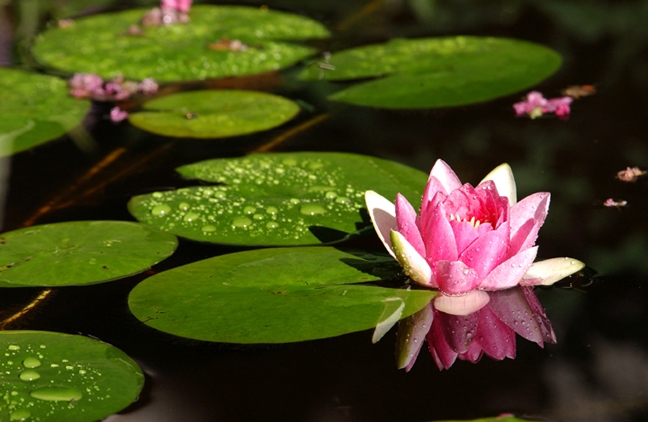
Pink waterlilies glowing in a garden pond. (Photo by Kathy Keatley Garvey)
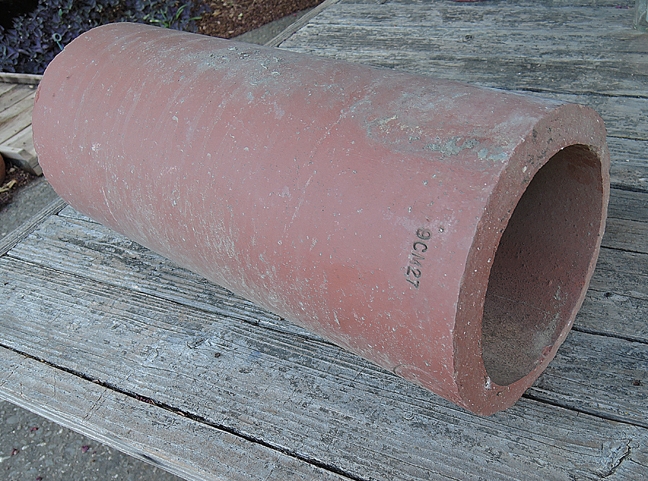
Terracotta pipe can be a hiding place for fish. (Photo by Kathy Keatley Garvey)
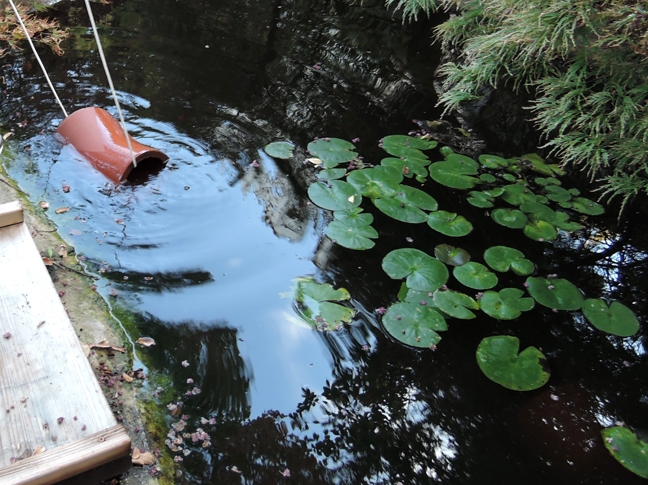
Terracotta pipe lowered into a fish pond. (Photo by Kathy Keatley Garvey)
Conservation organization California Trout helps establish endowed chair at UC Davis
California once teemed with millions of native salmon, trout and steelhead. The state has 31 distinct types of these iconic, majestic fish. But decades of degradation to aquatic habitat has depleted their numbers in many areas of the state. According to a report by UC Davis fisheries professor Peter Moyle and colleagues, 20 of these fish species are in danger of extinction within the next century. They are important species not just for the recreational or commercial benefits they afford, but also because they are a direct reflection of the health of the environment.
“Large self-sustaining populations of native salmon and trout are found where streams are in reasonably good condition,” Moyle wrote in his 2008 report, “SOS: California's Native Fish Crisis.” This report was commissioned by the conservation organization California Trout (CalTrout), which exists to support conservation science, education, and advocacy efforts to protect California's water resources and fisheries.
Moyle, whose academic home is the Department of Wildlife, Fish and Conservation Biology at UC Davis, is no stranger to CalTrout. He is the foremost authority on California's native freshwater and anadromous (sea-run) fishes and has been a leader in research and conservation efforts. His research has provided the core science essential to statewide conservation planning for freshwater and estuarine native fishes, especially salmon and trout. Graduate students who studied with Moyle now occupy many top-level fish ecologist and management positions in state and federal agencies, as well as key nonprofits like CalTrout.
In May of this year CalTrout and UC Davis announced the formal creation of the Peter B. Moyle and California Trout Endowed Chair in Cold Water Fishes. The endowment will provide crucial support for the chair holder's scholarly activities, teaching, and public service involving cold water fish and aquatic ecosystems. He or she will teach department courses, mentor graduate students, conduct research and outreach, and provide leadership in the conservation of cold water fishes and their ecosystems. The university recognizes that salmon, trout, and steelhead are the major drivers of many conservation efforts and will have the highest priority in the chair's program.
Most of the contributors to the endowment are CalTrout board members such as Nick Graves. He and his wife, Mary, explored many trails and trout waters in the Sierra Nevada over the years and have enjoyed larger rivers flowing from the Trinity Alps, Mt. Shasta, and the Siskiyou Mountains. “The opportunity to create a scientific chair whose research targets California waters, in perpetuity, is a comforting thought,” Graves said.
“I have worked with the organization since its earliest days and have always admired the dedication of its members to aquatic conservation,” Moyle said. “I am biased, of course, but I think CalTrout has made a very smart investment in the future by creating an endowed chair.”
Climate change threatens California native fish
The study, published online in May in the journal PLOS ONE, assessed how vulnerable each freshwater species is to climate change and estimated the likelihood that those species would become extinct in California within 100 years.
The researchers found that, of 121 native fish species, 82 percent are likely to be driven to extinction or very low numbers as climate change speeds the decline of already depleted populations. In contrast, only 19 percent of the 50 non-native fish species in the state face a similar risk of extinction.
“If present trends continue, much of the unique California fish fauna will disappear and be replaced by alien fishes, such as carp, largemouth bass, fathead minnows and green sunfish,” said Moyle, who has been documenting the biology and status of California fish for the past 40 years.
“Disappearing fish will include not only obscure species of minnows, suckers and pupfishes, but also coho salmon, most runs of steelhead trout and Chinook salmon, and Sacramento perch,” Moyle said.
Fish requiring cold water, such as salmon and trout, are particularly likely to go extinct, the study said. However, non-native fish species are expected to thrive, although some will lose their aquatic habitats during severe droughts and low-flow summer months.
The top 20 native California fish most likely to become extinct in California within 100 years as the result of climate change include (asterisks denote a species already listed as threatened or endangered):
- Klamath Mountains Province summer steelhead
- McCloud River redband trout
- Unarmored threespine stickleback*
- Shay Creek stickleback
- Delta smelt*
- Long Valley speckled dace
- Central Valley late fall Chinook salmon
- Kern River rainbow trout
- Shoshone pupfish
- Razorback sucker*
- Upper Klamath-Trinity spring Chinook salmon
- Southern steelhead*
- Clear Lake hitch
- Owens speckled dace
- Northern California coast summer steelhead
- Amargosa Canyon speckled dace
- Central coast coho salmon*
- Southern Oregon Northern California coast coho salmon*
- Modoc sucker*
- Pink salmon
The species are listed in order of vulnerability to extinction, with No. 1 being the most vulnerable.
Climate change and human-caused degradation of aquatic habitats is causing worldwide declines in freshwater fishes, especially in regions with arid or Mediterranean climates. These declines pose a major conservation challenge. However, there has been little research in the scientific literature related to the status of most fish species, particularly native ones of little economic value.
Moyle saw the need for a rapid and repeatable method to determine the climate change vulnerability of different species. He expects the method presented in the study to be useful for conservation planning.
“These fish are part of the endemic flora and fauna that makes California such a special place,” said Moyle. “As we lose these fishes, we lose their environments and are much poorer for it.”
Co-authors of the study were postdoctoral students Joseph Kiernan, Patrick Crain and Rebecca Quiñones of the Center for Watershed Sciences at UC Davis. Funding for the study was provided by the California Energy Commission.
Media coverage of the study includes:
USA Today: Climate change threatens 82% of native California fish
LA Times: California native fish could disappear with climate change
Don’t flush those fish!
Releasing aquarium fish into local waterways — or down the toilet — can damage aquatic ecosystems in a number of ways. The fish themselves can become an invasive species, they can disrupt habitats for other fish and aquatic species, and they may introduce secondary problems such as harmful pathogens or other aquarium species (seaweed, snails) into the waterways.
At least 13 of the 102 aquarium species that are imported into California have been introduced into California marine waters, according to a recent report by Susan Williams, professor in the Department of Evolution and Ecology at UC Davis and a marine ecologist the Bodega Marine Laboratory. These introduced species have a high success rate (69 percent) in establishing themselves.
Two very invasive species — the predatory lionfish and Caulerpa seaweed (aka “killer algae”) — have reportedly come from the aquarium trade. The lionfish, which has established itself along the East Coast where it eats smaller fish and threatens reef ecological systems, has not yet reached California waters, but the Caulerpa seaweed cost California more than $6 million to eradicate from two Southern California lagoons a decade ago.
At least 34 aquarium species were found to be potential invaders in California marine waters.
“Globally, the aquarium trade has contributed a third of the world’s worst aquatic and invasive species,” Williams said. "Lionfish are voracious predators in their native habitats, and in their invaded habitat any predator is a potential threat to the native ecosystem."
Williams’ advice: "To avoid releasing aquarium species into natural water, don’t dump your aquarium where they can become an expensive and harmful pests.”
She said that people should contact the vendor where the fish was purchased or the California Department of Fish and Wildlife to learn how to dispose of aquarium species responsibly.
Learn more:
- Complete UC Davis news release, by Kat Kerlin
- Our AmazingPlanet report
- Environmental News Network report
- Science on NBC News report


